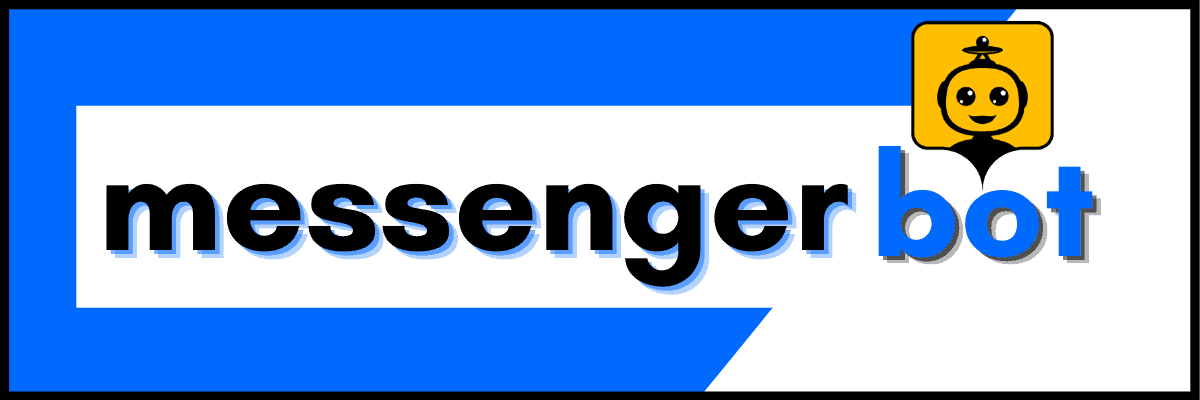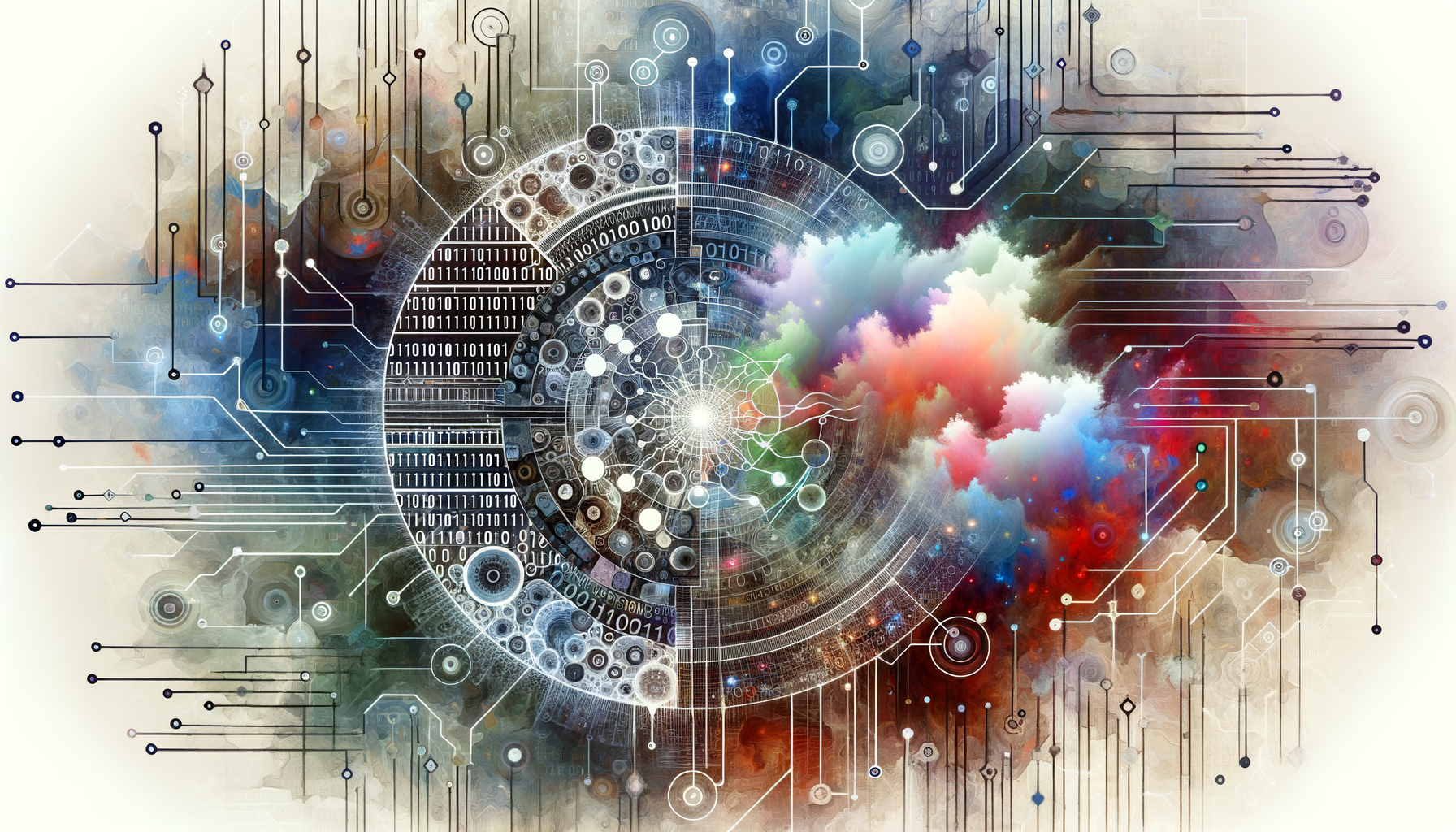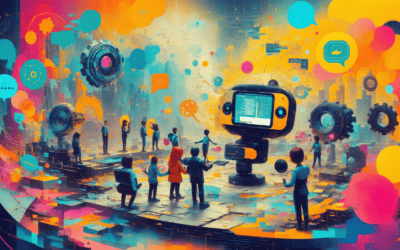In the rapidly evolving world of artificial intelligence, open source chatbots are emerging as powerful alternatives to proprietary solutions like ChatGPT. These AI-driven conversational agents, often found on platforms like GitHub, offer developers and businesses the flexibility to customize and deploy chatbot solutions tailored to their specific needs. From chatbot freeware to sophisticated open source chat models, the landscape of AI-powered communication is expanding, providing accessible options for those seeking to harness the power of conversational AI. This article delves into the realm of open source chatbots, exploring their capabilities, comparing them to ChatGPT, and highlighting the best frameworks and platforms available for implementing these versatile tools.
Understanding Open Source Chatbots
Open source chatbots have revolutionized the way we interact with artificial intelligence, offering a transparent and customizable approach to conversational AI. As a leading provider of AI-driven communication solutions, we at Messenger Bot recognize the importance of understanding these open-source alternatives and how they compare to proprietary systems like our own.
Is there an open source chat AI?
Yes, there are several open-source chat AI options available, each with unique features and capabilities. Some notable examples include:
- Bot Libre: A comprehensive platform offering free and open-source solutions for chatbots and AI.
- RASA: An advanced open-source machine learning framework for building contextual AI assistants and chatbots.
- OpenAI’s GPT-2: While not specifically designed for chat, this powerful language model can be adapted for conversational AI.
- Hugging Face’s Transformers: An open-source library providing pre-trained models for natural language processing tasks, including chatbots.
- DeepPavlov: An open-source conversational AI library built on TensorFlow and Keras.
- Botpress: An open-source platform for building, running, and improving conversational AI applications.
- Mycroft AI: An open-source voice assistant that can be customized for various applications, including chat interfaces.
These projects offer varying levels of complexity and customization, allowing developers to create sophisticated chat AI systems while leveraging open-source technologies. While these options provide flexibility, our Messenger Bot platform offers a more streamlined, user-friendly approach for businesses seeking immediate deployment without the need for extensive technical expertise.
Exploring open source chatbot github repositories
GitHub has become a hub for open source chatbot development, hosting a plethora of projects that range from simple scripted bots to complex AI-driven conversational agents. When exploring open source chatbot github repositories, you’ll find a diverse ecosystem of tools and frameworks.
One popular repository is the Botpress GitHub project, which offers a robust framework for building conversational AI. Another noteworthy mention is the RASA framework on GitHub, known for its machine learning-powered approach to natural language understanding.
These repositories often include comprehensive documentation, allowing developers to understand the underlying architecture and contribute to the project. However, it’s important to note that while these open-source options provide great flexibility, they often require significant technical expertise to implement and maintain effectively.
For businesses looking for a more turnkey solution, our Messenger Bot features offer advanced AI capabilities without the need for extensive coding knowledge. We provide a balance between customization and ease of use, ensuring that businesses can quickly implement sophisticated chatbot solutions across various platforms.
Exploring open source chatbot github repositories can be an enlightening experience for developers and businesses alike. It offers insights into the latest trends in conversational AI and can inspire new approaches to customer engagement. However, for those seeking a reliable, ready-to-use solution, proprietary platforms like ours at Messenger Bot provide the advantage of professional support and continuous updates to keep your chatbot at the cutting edge of technology.

Free AI Alternatives in the Chatbot Landscape
In the ever-evolving world of AI-driven communication, free chatbot alternatives have become increasingly sophisticated, offering businesses and developers powerful tools to enhance customer engagement without breaking the bank. At Messenger Bot, we recognize the importance of these free options in the market, as they often serve as stepping stones for businesses to explore the potential of conversational AI before investing in more comprehensive solutions.
Is there a free chatbot?
Absolutely! The chatbot landscape is teeming with free options that cater to various needs and skill levels. As a leader in AI-driven communication solutions, we at Messenger Bot acknowledge the value these free alternatives bring to the table, especially for businesses just starting their journey with conversational AI.
Here’s a rundown of some popular free chatbot options:
1. Tars: Offers a free plan with basic features for website integration, allowing businesses to dip their toes into chatbot functionality.
2. MobileMonkey: Provides a free tier specifically for Facebook Messenger chatbots, which can be a great starting point for social media engagement.
3. Landbot: Their free plan includes limited conversations and basic features, suitable for small-scale implementations.
4. ManyChat: Another platform offering a free plan for Facebook Messenger bots with core features to get you started.
5. Chatfuel: Allows up to 50 users on their free plan for Facebook Messenger, making it ideal for small businesses or startups.
6. Tidio: Combines basic chatbot functionality with live chat in their free tier, offering a hybrid approach to customer communication.
7. HubSpot Chatbot Builder: Available for free with HubSpot CRM, it provides simple bot creation tools integrated with their CRM system.
8. Collect.chat: Offers a free plan with limited features for website integration, focusing on lead collection and customer engagement.
9. Freshchat: Provides a free tier that includes basic live chat and bot capabilities, suitable for small teams.
10. ProProfs ChatBot: Their free plan caters to small businesses with limited features but can be a good starting point.
While these free options offer valuable entry points into the world of chatbots, it’s important to note that they often come with limitations in terms of features, customization, or the number of interactions. For businesses looking to scale or require more advanced functionalities, premium solutions like our Messenger Bot platform offer comprehensive features, enhanced AI capabilities, and robust integration options.
Evaluating chatbot freeware options
When evaluating chatbot freeware options, it’s crucial to consider several factors to ensure you choose the right solution for your needs. Here are some key aspects to consider:
1. Platform Integration: Look for chatbots that integrate seamlessly with your existing platforms. For instance, if you’re focusing on social media engagement, a Facebook Messenger-compatible bot like MobileMonkey or ManyChat might be ideal.
2. Customization Options: Even free chatbots should offer some level of customization. Assess how much you can tailor the bot’s responses and conversation flow to match your brand voice.
3. AI Capabilities: Evaluate the level of artificial intelligence chat bot open source solutions provide. Some free options may offer basic keyword matching, while others might include more advanced natural language processing.
4. Scalability: Consider whether the free plan can grow with your business. Many free chatbots, like Tidio or Freshchat, offer upgrade paths as your needs expand.
5. User Interface: The ease of use is crucial, especially for non-technical users. Platforms like HubSpot’s Chatbot Builder or Collect.chat often provide user-friendly interfaces for bot creation.
6. Analytics and Reporting: Check if the free version offers insights into bot performance and user interactions. This data is invaluable for optimizing your chatbot strategy.
7. Support and Documentation: Look for platforms with robust documentation and community support, which can be crucial when working with open source chatbot github projects.
While evaluating these free options, it’s important to remember that they often serve as starting points. As your business grows and your chatbot needs become more complex, you might find yourself requiring more advanced features. This is where solutions like our Messenger Bot platform come into play, offering sophisticated AI capabilities, extensive customization options, and seamless integration across multiple channels.
Moreover, when exploring chatbot freeware, don’t overlook the potential of open source chatbot frameworks. Platforms like RASA or Botpress offer powerful tools for developers to build custom chatbot solutions. These open-source alternatives provide greater flexibility and control, albeit with a steeper learning curve.
At Messenger Bot, we understand that the journey from free chatbots to advanced AI-driven solutions is a natural progression for many businesses. That’s why we offer a free trial of our platform, allowing you to experience the full potential of professional-grade chatbot technology before making a commitment.
Comparing Open Source Chatbots to ChatGPT
As a leader in AI-driven communication solutions, we at Messenger Bot understand the importance of comparing open source chatbots to proprietary models like ChatGPT. This comparison is crucial for businesses and developers looking to implement AI-powered conversational interfaces while considering factors such as customization, cost, and scalability.
Is there a free AI chatbot like ChatGPT?
Yes, there are several free AI chatbots that offer capabilities similar to ChatGPT. While these alternatives may not match ChatGPT’s full range of features, they provide valuable options for those seeking accessible AI-powered conversational experiences. Here are some noteworthy free AI chatbots:
1. Chatsonic: This popular ChatGPT alternative offers advanced conversational AI capabilities and is known for its user-friendly interface.
2. Claude AI: Developed by Anthropic, Claude is available through platforms like Poe and Discord, offering a sophisticated conversational experience.
3. Bing Chat: Microsoft’s AI-powered chatbot is integrated into the Bing search engine, combining conversational AI with web search capabilities.
4. Google Bard: Google’s conversational AI is accessible through a web interface and leverages the company’s vast knowledge base.
5. Character.AI: This platform allows users to create and interact with AI-powered characters, offering a unique and engaging chatbot experience.
6. Replika: An AI companion app that focuses on emotional support and conversation, providing a more personal chatbot experience.
7. Jasper Chat: While primarily an AI writing assistant, Jasper also offers chat functionality, making it a versatile tool for content creation and conversation.
8. YouChat: Integrated into the You.com search engine, YouChat combines AI-powered conversation with search capabilities.
9. HuggingChat: An open-source chatbot by Hugging Face, based on the BLOOM language model, offering a glimpse into the capabilities of open-source AI models.
10. Poe: A platform that hosts multiple AI models, including Claude and GPT-3.5, allowing users to interact with different chatbots in one place.
While these alternatives offer impressive capabilities, it’s important to note that they may have limitations compared to ChatGPT or premium solutions like our Messenger Bot platform. For businesses requiring more advanced features, customization options, or specific integrations, a professional solution might be more suitable.
Analyzing artificial intelligence chat bot open source solutions
When analyzing artificial intelligence chat bot open source solutions, it’s essential to consider several key factors that can impact their effectiveness and suitability for different use cases. Here’s an in-depth look at some crucial aspects:
1. Natural Language Processing (NLP) Capabilities:
Open source chatbots vary widely in their NLP abilities. Some, like RASA, offer sophisticated NLP that can understand context and intent, while others might rely on simpler pattern matching. The quality of NLP directly affects the chatbot’s ability to understand and respond accurately to user queries.
2. Customization and Flexibility:
One of the main advantages of open source chatbots is the ability to customize them. Platforms like Botpress provide extensive customization options, allowing developers to tailor the chatbot to specific business needs. This flexibility is crucial for creating unique user experiences and integrating with existing systems.
3. Community Support and Documentation:
The strength of the community behind an open source project can significantly impact its usability and ongoing development. Projects with active communities often have better documentation, more frequent updates, and a wealth of resources for troubleshooting and improvement.
4. Integration Capabilities:
The ability to integrate with various platforms and services is crucial. Many open source chatbots offer APIs and webhooks for integration with popular messaging platforms, CRM systems, and databases. This integration capability is essential for creating a seamless user experience across different channels.
5. Scalability:
As businesses grow, their chatbot needs often expand. Open source solutions should be evaluated based on their ability to handle increased loads and more complex conversational flows. Some open source platforms may require significant infrastructure investment to scale effectively.
6. Language Support:
Multilingual capabilities are increasingly important in our globalized world. While some open source chatbots excel in multilingual support, others may be limited to a few languages. At Messenger Bot, we recognize the importance of multilingual support, which is why our platform offers robust language capabilities to cater to diverse user bases.
7. Machine Learning Capabilities:
Advanced open source chatbots often incorporate machine learning to improve their responses over time. This feature allows the chatbot to learn from interactions and become more accurate and efficient in handling user queries.
8. Deployment Options:
Consider whether the open source solution can be deployed on-premises or if it requires cloud hosting. On-premises deployment might be necessary for businesses with strict data security requirements.
9. Analytics and Reporting:
The ability to gather insights from chatbot interactions is crucial for continuous improvement. Look for open source solutions that offer robust analytics and reporting features to track performance and user engagement.
10. Compliance and Security:
For businesses in regulated industries, it’s essential to choose an open source chatbot that can meet compliance requirements. Evaluate the security features and data handling practices of the open source solution.
While open source chatbots offer significant advantages in terms of customization and cost-effectiveness, they often require more technical expertise to implement and maintain compared to managed solutions like our Messenger Bot platform. Our solution combines the flexibility of customization with the ease of use and robust support that businesses need to deploy effective AI-driven communication strategies.
For businesses looking to explore open source options while maintaining professional-grade capabilities, we offer a free trial of our Messenger Bot platform. This allows you to experience the benefits of a managed solution while evaluating how it compares to open source alternatives.
Top Open Source Chat Models
At Messenger Bot, we recognize the importance of staying informed about the latest developments in open source chat models. These models are driving innovation in the AI chatbot space, offering powerful capabilities that can enhance customer interactions and automate various tasks.
What is the best open source chat model?
Determining the “best” open source chat model depends on specific use cases and requirements. However, several models stand out for their performance and versatility:
1. LLaMA: Developed by Meta AI, LLaMA is known for its efficiency and adaptability. It’s a powerful foundation for building custom chatbots and language applications.
2. Alpaca: Stanford’s instruction-following model based on LLaMA offers improved performance in following specific instructions, making it suitable for task-oriented chatbots.
3. Vicuna: Created by researchers at UC Berkeley, Vicuna rivals ChatGPT in quality and is an excellent choice for general-purpose conversational AI.
4. ChatGLM: This bilingual Chinese-English model from Tsinghua University is notable for its low hardware requirements, making it accessible for smaller organizations.
5. BLOOM: BigScience’s multilingual model supports 46 languages and 13 programming languages, making it ideal for global applications.
6. GPT-J: EleutherAI’s alternative to GPT-3 offers strong performance with lower computational requirements, suitable for businesses with limited resources.
7. OpenAssistant: Anthropic’s conversational AI aims to be a free, open alternative to ChatGPT, focusing on safety and ethical AI development.
While these open source models offer impressive capabilities, it’s important to note that implementing and fine-tuning them requires significant technical expertise. For businesses looking for a ready-to-use solution with professional support, our Messenger Bot platform offers a powerful, customizable chatbot experience without the complexities of managing open source models.
Examining open source chatbot frameworks
Open source chatbot frameworks provide the foundation for building sophisticated conversational AI applications. These frameworks offer developers the flexibility to create custom solutions tailored to specific business needs. Let’s examine some of the leading open source chatbot frameworks:
1. Rasa:
– Strengths: Highly customizable, supports both rule-based and machine learning approaches.
– Use cases: Enterprise-grade chatbots, complex conversational flows.
– Integration: Easily integrates with various messaging platforms and databases.
2. Botpress:
– Strengths: Visual flow builder, modular architecture, and built-in NLU.
– Use cases: Rapid chatbot development, multi-channel deployment.
– Features: Includes analytics, A/B testing, and a user-friendly interface.
3. Microsoft Bot Framework:
– Strengths: Robust SDK, seamless integration with Azure services.
– Use cases: Cross-platform bots, AI-powered conversational experiences.
– Tools: Includes Bot Framework Composer for visual bot design.
4. Dialogflow:
– Strengths: Easy to use, supports multiple languages and platforms.
– Use cases: Voice bots, multi-platform deployment.
– Features: Includes pre-built agents and integrations with Google services.
5. DeepPavlov:
– Strengths: Focus on deep learning and NLP research.
– Use cases: Advanced NLP tasks, research projects.
– Components: Includes pre-trained models for various NLP tasks.
6. Leon:
– Strengths: Privacy-focused, runs offline, modular architecture.
– Use cases: Personal assistants, home automation.
– Features: Supports custom modules and voice interactions.
7. ChatterBot:
– Strengths: Simple to use, machine learning-based responses.
– Use cases: Educational projects, simple conversational agents.
– Language support: Can be trained in multiple languages.
When considering these frameworks, it’s crucial to evaluate factors such as:
– Scalability: Can the framework handle increasing user loads?
– Customization: How easily can you adapt the framework to your specific needs?
– Community support: Is there an active community for troubleshooting and updates?
– Integration capabilities: Does it integrate well with your existing systems?
– Learning curve: What level of expertise is required to implement and maintain the chatbot?
While these open source frameworks offer powerful capabilities, they often require significant development resources and ongoing maintenance. For businesses seeking a more streamlined solution, our Messenger Bot platform combines the flexibility of customization with ease of use and robust support, allowing you to deploy sophisticated chatbots quickly and efficiently.
We understand that choosing the right chatbot solution is crucial for your business. That’s why we offer a free trial of our Messenger Bot platform, allowing you to experience the benefits of a professional, AI-driven chatbot solution firsthand. This trial period gives you the opportunity to compare our managed solution with open source alternatives, helping you make an informed decision that aligns with your business goals and technical capabilities.

Open Source Alternatives to ChatGPT
At Messenger Bot, we’re always exploring innovative solutions in the AI chatbot landscape. While our platform offers a robust, ready-to-use solution, we recognize the growing interest in open source alternatives to ChatGPT. Let’s dive into some of the most promising options available.
Is there an open source ChatGPT?
While there isn’t an official open-source version of ChatGPT, several community-driven alternatives offer similar functionality:
1. Chat with GPT: An unofficial, open-source ChatGPT app with enhanced features, including voice synthesis via ElevenLabs integration. Built using TypeScript and React, it leverages OpenAI’s ChatGPT API.
2. GPT4All: A free, local AI model that runs on consumer-grade hardware, offering ChatGPT-like capabilities without cloud dependencies.
3. LLaMA: Meta’s Large Language Model Meta AI, recently open-sourced, serves as a foundation for building chatbots and AI assistants.
4. BLOOM: A multilingual, open-source language model developed by BigScience, capable of generating text in 46 languages.
5. PaLM: Google’s Pathways Language Model, with an open-source version called PaLM-E available for research and development.
6. Alpaca: Stanford’s instruction-following language model, fine-tuned from LLaMA, offering an open-source alternative to ChatGPT.
7. Dolly: Databricks’ open-source large language model, trained on the Databricks Machine Learning Platform.
These projects aim to democratize AI technology, allowing developers to create, modify, and deploy chatbot applications with capabilities similar to ChatGPT. However, they may require more technical expertise to implement compared to proprietary solutions like our Messenger Bot platform.
Exploring open-source chatbot UI options
When it comes to implementing open-source chatbots, having a user-friendly interface is crucial. Here are some notable open-source chatbot UI options:
1. Chatbot UI: A sleek, customizable interface for AI chatbots, compatible with various language models.
2. Hugging Face Chat UI: An open-source chat interface that can be easily integrated with Hugging Face’s language models.
3. Microsoft Bot Framework Web Chat: A highly customizable web-based chat control for the Microsoft Bot Framework.
4. Botpress: While primarily a chatbot platform, Botpress offers a customizable UI component that can be adapted for various chatbot implementations.
5. Leon AI: An open-source personal assistant with a clean, minimalist UI that can be customized for different use cases.
These open-source UI options provide flexibility for developers looking to create custom chatbot experiences. However, it’s important to note that implementing and maintaining these solutions requires significant technical expertise and resources.
For businesses seeking a more streamlined approach, our Messenger Bot platform offers a user-friendly interface out of the box, combining the power of AI with ease of use. Our solution allows you to set up your first AI chatbot in less than 10 minutes, without the need for extensive coding or UI development.
While open-source alternatives offer great flexibility, they often come with challenges such as:
1. Integration complexity: Combining different open-source components can be time-consuming and technically challenging.
2. Maintenance overhead: Regular updates and security patches require ongoing attention and resources.
3. Limited support: Community-driven projects may lack the comprehensive support that businesses often need.
4. Scalability concerns: Some open-source solutions may struggle to handle high-volume interactions efficiently.
At Messenger Bot, we address these challenges by providing a robust, scalable platform with professional support and regular updates. Our solution allows businesses to focus on crafting engaging conversations rather than managing technical infrastructure.
We encourage businesses to explore these open-source options to understand the landscape of AI chatbots. However, if you’re looking for a balance of power, ease of use, and professional support, we invite you to try our free trial. Experience firsthand how our AI-driven chatbot solution can enhance your customer interactions and streamline your business processes.
Prominent Open Source Chatbot Platforms
At Messenger Bot, we recognize the importance of exploring diverse AI solutions. While our platform offers a comprehensive, user-friendly chatbot experience, we understand that some businesses may be interested in open-source alternatives. Let’s delve into some prominent options in the open-source chatbot landscape.
What are two open source alternatives to ChatGPT?
Two notable open-source alternatives to ChatGPT that have gained traction in the AI community are LLaMA and GPT-J.
1. LLaMA (Large Language Model Meta AI):
Developed by Meta AI, LLaMA is a powerful open-source language model that has quickly become a favorite among researchers and developers. With 65 billion parameters, LLaMA demonstrates impressive capabilities in various natural language processing tasks, including:
– Question-answering
– Text summarization
– Language understanding
– Text generation
LLaMA’s versatility allows it to be fine-tuned for specific applications, making it an excellent foundation for building custom chatbots and AI assistants. Its efficiency in processing and generating human-like text makes it a strong contender in the open-source AI space.
2. GPT-J:
Created by EleutherAI, GPT-J is another prominent open-source language model that offers impressive performance with a more modest 6 billion parameters. Despite its smaller size compared to LLaMA, GPT-J excels in:
– Text generation
– Completion tasks
– Language understanding
One of GPT-J’s key advantages is its accessibility. It can be deployed on consumer-grade hardware, making it an attractive option for developers and small businesses looking to experiment with AI-driven conversational interfaces without the need for extensive computational resources.
Both LLaMA and GPT-J provide the flexibility for customization and fine-tuning, allowing developers to tailor these models to specific use cases and industries. This adaptability is crucial for businesses looking to create unique, domain-specific chatbot experiences.
While these open-source alternatives offer powerful capabilities, it’s important to note that implementing and maintaining them requires significant technical expertise. For businesses seeking a more turnkey solution, our Messenger Bot platform offers a balance of advanced AI capabilities and ease of use, allowing you to set up your first AI chatbot in less than 10 minutes.
Investigating Botpress and other leading platforms
In addition to language models like LLaMA and GPT-J, there are several open-source chatbot platforms that provide more comprehensive frameworks for building conversational AI. Let’s explore Botpress and other leading options:
1. Botpress:
Botpress is an open-source conversational AI platform that offers a robust set of tools for building, deploying, and managing chatbots. Key features include:
– Visual flow editor for designing conversation flows
– Natural Language Understanding (NLU) engine
– Integration with popular messaging platforms
– Extensible architecture for custom modules
Botpress strikes a balance between flexibility and ease of use, making it popular among developers and businesses alike.
2. Rasa:
Rasa is another leading open-source chatbot framework known for its powerful natural language processing capabilities. It offers:
– Machine learning-based dialogue management
– Custom actions and integrations
– Scalable architecture for enterprise deployments
– Active community and extensive documentation
Rasa is particularly well-suited for building complex, contextual conversational AI applications.
3. NLTK (Natural Language Toolkit):
While not a chatbot platform per se, NLTK is a crucial open-source library for natural language processing in Python. It provides essential tools for:
– Tokenization and parsing
– Part-of-speech tagging
– Named entity recognition
– Sentiment analysis
NLTK serves as a foundation for many custom chatbot solutions, offering developers the building blocks for sophisticated language understanding.
4. Hugging Face Transformers:
Hugging Face Transformers is an open-source library that has revolutionized the accessibility of state-of-the-art natural language processing models. It offers:
– Pre-trained models for various NLP tasks
– Easy fine-tuning for specific use cases
– Integration with popular deep learning frameworks
– Active community and continuous updates
While not a chatbot platform itself, Hugging Face Transformers provides the underlying technology for many advanced conversational AI solutions.
These open-source platforms and tools offer exciting possibilities for businesses and developers looking to create custom chatbot solutions. However, it’s important to consider the trade-offs:
– Development time and resources required
– Ongoing maintenance and updates
– Scalability and performance optimization
– Integration with existing systems
For businesses seeking a balance between customization and ease of implementation, our Messenger Bot platform offers a robust set of features that can be quickly deployed and scaled. We provide the power of AI-driven conversations without the complexity of managing open-source infrastructure.
Whether you choose to explore open-source alternatives or opt for a managed solution like ours, the key is to select a platform that aligns with your business goals and technical capabilities. We encourage you to try our free trial to experience how Messenger Bot can elevate your customer interactions with minimal setup and maximum impact.
Implementing Open Source Chatbots
Implementing open source chatbots can be an exciting venture for businesses looking to harness the power of AI-driven conversations. While we at Messenger Bot offer a streamlined solution for quick deployment, we understand that some organizations may prefer to explore open source options for greater customization. Let’s delve into the key aspects of implementing open source chatbots.
Leveraging open source chatbot APIs
Open source chatbot APIs provide developers with the flexibility to create custom conversational interfaces tailored to specific business needs. Here are some popular open source chatbot APIs and how to leverage them effectively:
1. Rasa API:
Rasa offers a robust API that allows developers to integrate machine learning-based dialogue management into their applications. Key features include:
– Natural Language Understanding (NLU) for intent classification and entity extraction
– Dialogue management for context-aware conversations
– Customizable actions for integrating with external systems
To leverage Rasa API effectively, developers should focus on training the NLU model with domain-specific data and designing conversational flows that align with business processes.
2. Botpress API:
Botpress provides a comprehensive API for building and managing chatbots. Its key features include:
– Content management for conversation flows
– Natural Language Processing (NLP) for understanding user inputs
– Integration with various messaging platforms
To make the most of Botpress API, developers should utilize its visual flow editor for designing complex conversation scenarios and leverage its built-in NLP capabilities for improved language understanding.
3. NLTK API:
While not a chatbot-specific API, the Natural Language Toolkit (NLTK) offers essential tools for natural language processing that can be used to build custom chatbot solutions. Key functionalities include:
– Tokenization and parsing
– Part-of-speech tagging
– Named entity recognition
Developers can use NLTK API to enhance the language understanding capabilities of their chatbots, especially when dealing with complex linguistic structures or domain-specific terminology.
When implementing open source chatbot APIs, it’s crucial to consider factors such as:
– Scalability: Ensure the chosen API can handle increasing user loads
– Customization: Evaluate the level of flexibility offered for tailoring the chatbot to specific needs
– Community support: Look for active communities that can provide assistance and contribute to ongoing development
While open source APIs offer extensive customization options, they often require significant development resources and expertise. For businesses seeking a more immediate solution, our Messenger Bot platform provides a user-friendly alternative that combines advanced AI capabilities with ease of implementation.
Best practices for integrating chat bot open source solutions
Integrating open source chatbot solutions requires careful planning and execution. Here are some best practices to ensure successful implementation:
1. Define Clear Objectives:
Before diving into implementation, clearly outline what you want to achieve with your chatbot. This could include:
– Improving customer support efficiency
– Generating leads
– Automating repetitive tasks
Having well-defined objectives will guide your development process and help measure success.
2. Choose the Right Framework:
Select an open source framework that aligns with your technical capabilities and project requirements. Popular options include:
– Botpress for its visual flow editor and extensibility
– Rasa for its machine learning-based approach
– Microsoft Bot Framework for its integration with Azure services
3. Invest in Natural Language Processing:
Enhance your chatbot’s language understanding capabilities by leveraging advanced NLP techniques. Consider using:
– Hugging Face Transformers for state-of-the-art language models
– NLTK for custom NLP pipelines
4. Design Conversational Flows:
Create intuitive and engaging conversation flows that guide users towards their goals. Focus on:
– Natural language responses
– Handling various user intents
– Providing clear options for user actions
5. Implement Robust Error Handling:
Prepare your chatbot to handle unexpected inputs and errors gracefully. This includes:
– Providing helpful fallback responses
– Offering options to connect with human support when needed
– Continuously improving based on user interactions
6. Ensure Data Privacy and Security:
When dealing with user data, prioritize privacy and security measures:
– Implement encryption for data transmission
– Comply with relevant data protection regulations (e.g., GDPR)
– Regularly update and patch your chatbot system
7. Continuous Testing and Improvement:
Regularly test your chatbot’s performance and gather user feedback for ongoing improvements:
– Conduct A/B testing for different conversational flows
– Analyze user interactions to identify areas for enhancement
– Keep your NLP models updated with new training data
8. Integration with Existing Systems:
Ensure seamless integration with your existing business systems:
– Connect your chatbot to CRM systems for personalized interactions
– Integrate with backend databases for real-time information retrieval
– Set up analytics tools to track chatbot performance
While these best practices can guide you in implementing open source chatbot solutions, it’s important to recognize that this process can be complex and time-consuming. For businesses looking for a more streamlined approach, our Messenger Bot platform offers a balance of customization and ease of use, allowing you to set up your first AI chatbot quickly while still benefiting from advanced AI capabilities.
By following these best practices, whether you choose an open source solution or a platform like ours, you’ll be well-positioned to create a chatbot that enhances customer interactions and drives business growth. We encourage you to explore the options that best fit your needs and consider trying our free trial to experience the benefits of a managed AI chatbot solution.




